ABOUT ME
Hello! I'm Niharika.
I have always been fascinated with the ubiquity of technology, and aspire to work in the field of artificial intelligence and conduct robotics-related research. I aspire to innovate solutions to some of the world’s most pressing problems, broaden perspectives, and spark positive change utilizing my computer science, leadership, and entrepreneur-oriented skills. I am a statistical data science major at the University of California Davis and will be competing in Division 1 Track and Field. I take pride in being a #GirlPowered engineer and am constantly motivated to better myself and the world around me using what I learn. As my portfolio will demonstrate, almost everything I do relates to technology solutions. If you like what you have read so far, please take a look at the rest of my portfolio!

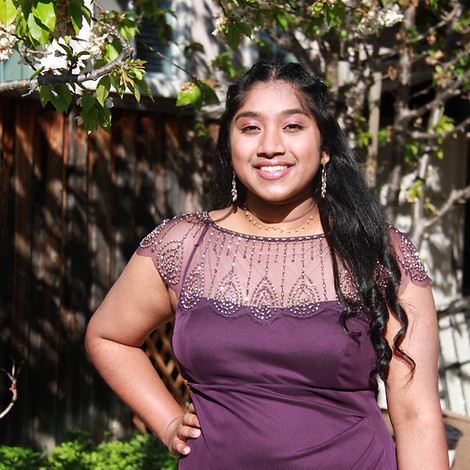
Niharika Suravarjjala
UC DAVIS STATISTICAL DATA SCIENCE
Email:
Phone:
(925)413-6441
Address:
Dublin, California
RESUME
EXPERIENCE
WELCOME TO MY EXPERIENCE PAGE!
INTRODUCTION
The following page details my involvement in all sorts of projects related to bolstering my community through the use of technology, effective communication and leadership, as well as knowledge cultivated in school.
JUNE 2021 - SEPTEMBER 2021
Marketing Intern
AHANA CLOUD
At Ahana, I was responsible for managing paid ad compaigns, SEO Content optimization related tracking, analysis, and content optimization, as well as creating the company datasheet. I additionally spearheaded salesforce in/outbound tracking, monitored email/event metrics, and frequently published written content on the website.
JUNE 2021 - AUGUST 2021
Software Engineering & Robotics Intern
VIEW INC.
As a robotics and software engineering intern I created a Virtual Reality simulation for customers to experience the glass and our sales pitch via VR. I also hosted Weekly Intern-Standup meetings, and won 3rd place in the internship program hackathon hosted by the company as well as an honorable mention.
OCTOBER 2020 - 2021
Project Lead
TERSUS (Sanitization Drone)
Project TERSUS is a sanitization drone Gael Force Robotics club is building to disinfect our school football stadium and city parks. TERSUS autonomously sanitizes a given area for ¼ the market price and with twice the flight time compared to industrial drones. It makes the lives of our management & operations team easier, keeps students safe, and is an innovative solution helpful for the pandemic. Our project was showcased on KRON4: https://tinyurl.com/kron4drone.
JUNE - AUGUST 2020
UI/UX Intern
COUCHBASE
Worked in the engineering research and database department with professionals to learn, modify, implement, and present changes to the NoSQL query language tutorial online. Compared tutorial interface to the current version of the Couchbase server then analyzed, tested, and used my observations and customer feedback to program changes in CSS and JavaScript.
JUNE - AUGUST 2020
Software Development Intern
APPLE
During my 6 week internship at Apple, I worked on creating multiple game designs and UI Mockups using the XCODE 11.1 software (Swift 5.0). My objective was to analyze the features of XCODE from a developer perspective and find loopholes/areas of improvement to target for the next software release. I worked directly with industry professionals and other young girls around the United States to produce applications in which we heavily focused on manipulation of data types (specifically 2D arrays) and breakpoints.
2019-PRESENT
President
DOVETO
Doveto is a non-profit organization that encourages children to be leaders for themselves, the less fortunate, the underrepresented, and use the skills they learn from our programs to give back to the world. I have taught and led multiple programs for this company including: interpersonal leadership and communication camps, robotics and basic programming, and also the Tri-Valley Inter Gavel Club contest.
2017-PRESENT
President, Public Relations/Event Director
GAEL FORCE ROBOTICS
Through Gael Force Robotics I have successfully run the Battle of the Bay Tournament in January 2020, where I organized and managed a robotics competition for teams all over California. Check out our team Instagram page: https://instagram.com/gfr5327v?igshid=1fnbk0qtu130v
2019-PRESENT
Public Relations, President
ENVIRONMENTAL ADVOCACY
In the 2019-2020 school year, we attended and volunteered at the Contra Costa Community Climate Rally where I also delivered a speech. Click here for the link: https://youtu.be/mDeu181eQpc
JUNE - AUGUST 2020
Coordinator
3 C's YLP PROGRAM
The 3 C's YLP Program strives to teach students mindfulness for youth leadership through the intersection of compassion, collaboration, and community service. I currently help run the program and work as a mentor to guide students on the right path when working on strong speaker traits and professionalism.
2018- 2021
President
DISASTER OUTREACH PROGRAM
The Diaster Outreach Program (DOP) is a club based in Dublin High School. I work with a team of classmates to help victims of natural disasters, work with school administrations to implement safety procedures and have hosted numerous fundraisers/events such as the Dublin Business Fair. The summer of 2020 we hosted a mask drive for COVID-19 frontline workers where we donated masks and create hand made cards to show our appreciation.
2016-2020
Founder, President, VP of Education
GALLANT GAVALIERS GAVEL CLUB
Along with a couple of fellow youth leaders, I started the Gallant Gavaliers Gavel Club to help develop strong speakers, leaders, and effective communicators within the Tri-valley community. We now host the inter-gavel club competitions annually in collaboration with Doveto and have over 25 members. Take a look at this video of my speech for Toastmasters TV : https://www.youtube.com/watch?v=l-dQ-401E84
2015-2020
Robotics Youth Mentor
FIRST LEGO LEAGUE AND VEX ROBOTICS
From 2017 I have been an FLL (First Lego League) youth mentor, where I work with a group of 3rd-7th grade students to teach them the STEM fields of robot design, a project that will benefit their community, as well as the respective robot challenge they have.
EDUCATION
2017-2021
High School Diploma
DUBLIN HIGH SCHOOL
I am currently a member of the Dublin Engineering and Design Academy. I have taken many STEM relevant courses including PLTW Computer Science Principles, PLTW Honors Principles of Engineering, AP Computer Science A, AP Calculus AB, AP Chemistry, and AP Environmental Science. Right now I am enrolled in AP Statistics, Advanced Physics, and Honors Digital Electronics.
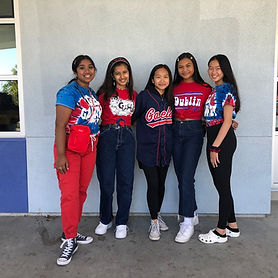
ATHLETICS
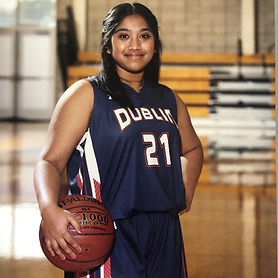
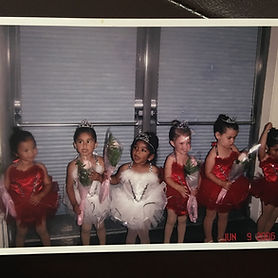
BASKETBALL
From a young age, I have been intrigued by the game of basketball. Watching the NBA on TV I would aspire to be one of the tall men on screen tossing a ball around to each other with such swiftness. I started playing in 2nd grade for the Junior Warriors and the rest is history. I played undefeated on my Fallon Middle School team for 3 years, and played JV basketball at Dublin High my freshman and sophomore years.
DANCE
Whenever music plays whether it's at a party, a dance concert, or even during an Uber ride you can count on me to begin dancing unapologetically. My dance career began when I was only 6 years old when I joined a ballet class. I then transitioned to Hula, Bollywood dancing, Kathak, and finally Tanjoure style Bharatnatyam which I practiced for 6 years before my arrengatram in June 2018. I still continue Bollywood dance and lyrical/contemporary styles.

THROWS (T & F)
Although I'm relatively new to track, it has become one of the largest parts of my life. Just this past 2019-2020 season I earned a varsity letter at Dublin High School for my marks in shot put and discus. The season was cut short due to COVID-19, but that didn't stop me from putting on a mask and doing drills in my backyard and finding empty spaces at the park to throw.
SKILLS

Strong Leader
Effective Communicator
Hardworking
Adaptable
Diligent and Professional
Java, Python, C++, HTML - Fluent
PROS, SQL - Advanced
Google Presentations - Advanced
Telugu, English - Fluent
Hindi, Spanish - Advanced
PROJECTS
GENERAL
Application Development, Environmental Outreach
NanoRayX

Food Foresight Backend

DIGITAL ELECTRONICS
Dublin Engineering and Design Academy, 2020-2021
PLD MORSE CODE DEVICE

AC/Heating System

NANO-RAY-X(2019-2020)
Currently, the average cost of an ER visit in America is around $1,300, and most of the time only a quick diagnosis of an X-Ray is needed prior to taking action. A couple classmates and I designed and created a portable X-ray machine prototype to resolve the above problems. We created a 3D model of the device using Autodesk Inventor and built/programmed a small scale physical prototype utilizing VEX parts and sensors. Additionally we outlined a UI and programmed a back end to an app that would connect to the X-Ray machine to aid in exporting the X-Ray image scans.
Water Quality Data
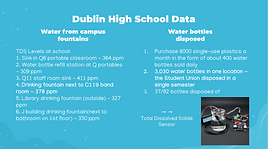
AUTO HEATING AND COOLING SYSTEM SIMULATION
(10/14/2020 - 10/21/2020)
Our first project of the year for Digital Electronics was PLTW Project 1.2.7 “Circuit Design.” The objective of the project was to create a circuit solving an actual problem or create a design simulating an existing solution with at least three inputs and one output, to practice applying combinational and sequential logic. For this task, I created a simulation of automatic air conditioning and heater system. Based on the given input temperatures, the status of the door (whether it was closed or open), and if the automatic setting was turned on or off through switches, the system would heat, cool, or be completely off. The biggest challenge I faced in utilizing combinational logic to simulate the system was arriving at the logic itself from the truth table. At the time, I was not aware of how to write logic expressions given a truth table - so as you can imagine it was quite an involved process. It took a lot of trial and error, but after isolating a couple of inputs at a time and testing different gates - I was able to create a multisim simulation. From the project, I learned how to breadboard a circuit given a multisim simulation, and how to troubleshoot and test different logic to arrive at the correct expression. Patience and my hard-work ethic paid off in the end when I was able to successfully create the entire circuit.
FOOD FORESIGHT (2017-2019)
Forty percent of the national food supply is never eaten. Food is either left to expire or is thrown away as uneaten leftovers. So my partner and I created a database software named Food Foresight that scans food labels and allow the consumer to enter information such as expiration dates then, an app sends out daily updates on expiring foods so the user can consume the product, therefore minimizing food wastage.
DUBLIN PLASTIC BOTTLE USAGE (2020-2021)
In schools around the Dublin Unified School District, plastic water bottles are commonly used as they're sold in the cafeteria and vending machines. Additionally, there is a lack of clean filtered water fountains and bottle filling stations. To change this, a team of students and I are creating presentations and financial plans to propose to the school a change in the way water is consumed.
PROGRAMMING LOGIC DEVICE MORSE CODE
(03/05/2021 - 03/18/2021)
This project was my favorite project of the year by far because it allowed us to fuel our creativity while still working with our breadboard. For this PLD project, we had the freedom of building whatever we wanted as long we included 4 outputs, 5 outputs, and a clock that allowed our inputs to cycle automatically. I decided to create a simulation of morse code using LEDs to display dots and the G segment of a seven-segment display for small dashes. I chose letters that could be displayed using these three characters and my message was "SOS [space] LOST [space] at SEA [space]." The majority of the time on this project was spent ensuring there were no errors in my PLD file, from making sure my input connectors were all intact and that they connected each to only one net or wire. The physical breadboarding portion was very simple since I was utilizing the LEDs on my CMOD 6 PLD chip and also two G segments on my 2 SSDs respectively. However, one of the biggest challenges I faced was figuring out which pins on my PLD were functional. I eventually had to test every single one before identifying which of my pins were broken before changing my input/output connectors as needed.
AP COMPUTER SCIENCE A
Dublin Engineering and Design Academy, 2019-2020
Nest Protect User Interface
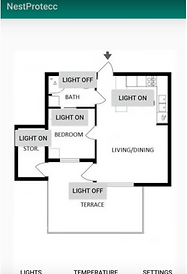
Chatbot UML Diagram
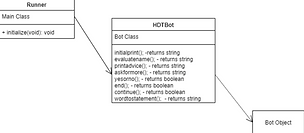
ANDROID STUDIO APPLICATION: NESTPROTECCT(9/30/19-10/11/19)
A couple classmates and I worked together to create an interactive user interface using android studio and used multiple concepts we learned on classes, methods, and design effectivity (especially for whitespace on the app). The project was a chance to create any version of an application with a unique user interface and serve a useful purpose in the real world. The entire process our team used to design and construct this design is linked on this file. There was a lot of planning that went into creating this project and it took up almost more time than executing the project! We created a flowchart, a UML diagram, and a map of useful pre-existing packages that could aid us in our objective. The video of our final project walks through all the screens we have on our project and encompasses all of the work we did on the application. Some major challenges we faced were fragmentation, constraints and intents, and tying the code from page to page (transition between screens smoothly). My group and I were able to troubleshoot and persevere through these issues and find solutions that bettered our final product for example setting fixed constraint values.
PLTW PRINCIPLES OF ENGINEERING
Dublin Engineering and Design Academy, 2018-2019
Solar Hydrogen VEX Model

Cork Insulator
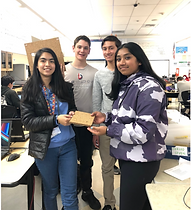
SOLAR HYDROGEN VEHICLE(10/30/18 - 11/16/18)
Recently, a couple of classmates and I created a VEX vehicle that runs on solar and hydrogen fuel sources under different circuit configurations (parallel and series). The objective of the project was to try and create the most efficient or scalable vehicle in order to make cars and the future of fuel more environmentally friendly. I used this attached documentation in order to track progress through our project. In order to reach our final product I made a couple of brainstorm sketches, multiple calculations, and went through quite a lot of vehicle prototypes. The prototypes I designed included vehicles with different types of wheels (traction and Omni) and many different gear ratios. In the end, both Amelyn (a partner) and I decided to make a car with a 1:1 gear ratio using the smallest wheels I could possibly use. Our group faced many challenges along the way other than build issues as well. Some problems included figuring out how to create a series and parallel circuit configuration for the power sources, placement and security of fuel cells, size constraints, and also what was required from the gear ratios and weight of the robot overall in order to maximize efficiency. Lots of time was spent on the vehicle itself and the documentation we created for this project as well. This project just like the others taught me new ways to work but the most important pieces of information I took from it included keeping and open mind and being flexible if things do not turn out perfectly to deal with issues that may arise in the process.
JAVA CHATBOT (11/06/19-11/12/19)
For this project our my two partners and I were assigned with the task of creating a mini version of a chatbot and practiced using the concepts of tokenization, parsing strings, and the implementation of a word bank into our function that would maximize the output and combinations of proper grammatical sentences we could make. Our chatbot is a Thoreau chatbot, an inspiration from the philosophies of Henry David Thoreau. The chatbot attempts to mimic the personality of Henry David Thoreau, occasionally using quotes from him to educate users. We decided to use Thoreau because his essays have influenced American literature beginning from the Renaissance and are still reflected in modern-day values. Thoreau is an accurate depiction of American literature because he felt deeply held political views and was not afraid to express them and create a more diverse definition of the American Dream. ThoreauBot responds to statements with his philosophy and makes the reader think for themselves changing the dependence that someone might have or expect from a chatbot.
RENEWABLE INSULATION (02/06/19 - 02/19/19)
In February three classmates and I created a cork-based piece of renewable insulation that was environmentally friendly, recyclable, and also cost-effective. The goal of the project was to construct an insulator that would transfer the least amount of heat when placed directly on top of a light source. In this project my group and I cycled through the entire design process including research, brainstorming, building, testing, collecting data, and evaluating which we logged in our documentation. For this project, the most significant part was research because the material we were using had to be easy to apply an adhesive to, uniform all throughout, and had to have a life cycle in which it could be recycled or reused at the end. Once the research was completed my group and I decided on a couple of potential designs in which we could utilize cotton, cardboard, and cotton. After a bit of testing, we decided on using layers of cork for our insulator but realized that adhesives (i.e. glue or duct tape) that put the boards together well were not environmentally friendly. So we continued research halfway through our construction and eventually discovered washi tape which consists of recycled microfibers. When we pieced the structure together it ended up working out - producing the insulator you can see on the picture to the left.
PLTW COMPUTER SCIENCE PRINCIPLES
Dublin Engineering and Design Academy, 2017-2018
Atari Breakout

Text Adventure

MIT APP INVENTOR: ATARI BREAKOUT (9/22/17-10/06/17)
A classmate and I worked on an MIT App Inventor project to create a spinoff of Google's PC version of Atari Breakout. The main goal of our project was to create an app that was user-interactive using appropriate algorithms for different scenarios, and overall, live up to this rubric. The objective of the app we made was to try and get rid of the blocks at the top of the screen by navigating a ball with a slider at the bottom of the page. The process of brainstorming, developing, and launching the app, is logged on this project notebook. I wish I could say the development process was perfect, but naturally, my partner and I ran into a few problems along the way. For example, we were not able to perfect the speed the ball traveled as the levels progressed or make the slider that helps you navigate the screen invisible right away. It took some time, troubleshooting, and some help from our peers and teachers, but we eventually got it to be just the way we wanted. It was very important that my partner and I could work well together, and do even amounts of work.
PYTHON TEXT ADVENTURE (01/11/18 - 01/22/18)
The objective of this project was to understand flowcharting (the design/brainstorm process behind coding) as well as learn how to work with Python to create a user interactive environment. My partner and I decided to surround it with a one-day trip theme giving the user multiple choices on locations to visit and then choices on what to do, eat, and how they end their day. The project leads the user through the options they have and gives them multiple choices on what they can do. As you can see in the picture to the right, the code gives you a choice between what you would like to do when you choose San Francisco. Based on that it gives you options on what you would like to do there, as well as guide you through a little adventure. My role in this project was as a planner as well as a co-programmer. My partner and I created a detailed flowchart for our project and created multiple ways the user could end the game. Then we went ahead and found the proper algorithms we needed to code, and then, got it done. The main issue we ran into was with global variables, but with a little bit of research we figured it out.
BLOG
DEDA GUEST SPEAKERS
MR. JASON YOSINSKI
November 5th, 2019
Jason Yosinski is currently employed at Uber's Artificial Intelligence Labs and works in a very popular subset of AI - machine learning. He provided my class and me with a very interesting perspective on the role of AI currently and how it will continue to influence the future and also demonstrated to us an imaging network he was currently working on for Uber making his presentation extremely engaging and also high in educational value. The first thing he showed our class was a video of two chatbots talking to each other and how there were many flaws in the current way chatbots speak compared to humans but the large general improvement they have had since 2010 when they were first beginning to be developed. 2010 was the beginning of the machine learning sector of Artificial Intelligence but neural nets were what had to occur in order to allow ML to become a viable form of AI. Some examples of revolutionary Machine Learning and Artificial Intelligence combinations include speech recognition, natural language coding, reinforcement learning, and robot gait learning. He then showed us a very helpful example of image networking through a recognition application he was developing at the time where a picture of an animal can be put into the system and it would return to you the species. He taught us about the 5 convolutional layers of an image, the 3 FC layers, pixels, and about plotted neuron activation. We did a fun activity with derivatives and matrices as well and saw the direct application of mathematics in engineering but specifically AI and ML.
MR. MAHER SOLLOUM
April 8th, 2019
Mr. Maher Salloum is currently working at Sandia National Labs in data compression but also has a Ph.D. in Biomechanical Engineering. His views on engineering were very unique and influenced the work he shared with us at the presentation - his first project and his current project. He believes that the definition of engineering is comprised of two main concepts which are symmetry and economy. Mr.Salloum utilizes this definition in his work to produce the best product possible that is creative, environmentally friendly, and saves material or money. His first project was investigating magnetic nanoparticle hyperthermia. In this project, he built off the idea that high temperatures can be used to kill cancer cells in the body. He wanted to find a way to help cancer patients because the mortality rates are extremely high and although there are many ways to fight cancer, hyperthermia would be the best solution because it is a minimally invasive technique. His solution was to create multiple small vaccines to target localized cancer cells rather than have a large vaccine to damage less of the unharmed tissue and destroy the cancer cells with greater accuracy. The project Mr.Salloum is currently working on is for Sandia Labs, where he works with wavelets to compress data and improve both data storage and transfer. There were two main points that stood out to me in the second part of his presentation. The first is the difference between lossy and lossless data compression and the second is that big data will be an extremely important STEM field in our future. Lossy data compression can be done at quick rates but the transferred image will not be the same resolution or image as the original while lossless data compression is a slow process but the transferred data will be as accurate as it can be. Mr.Salloum also talked briefly about how big data will be important in the future and this ties into the reason why there are many new databasing companies trying to find solutions to current storage issues
MS. ANNABEL GOMEZ
December 4th, 2020
If I had to sum up Annabel’s talk in one word, it would be inspiring. To see someone build off the skills they learned through the Engineering Academy and apply those to find success is pretty amazing. I learned a lot about what the college experience is really like, specifically at CalTech, and a lot of tips on how to jumpstart your career as a freshman at college. I also learned some cool facts about space and satellites like trilateration which is the use of 3 satellites to identify an object's speed, and location, and assist in guiding through navigation.
Annabel started her talk by speaking about how she found out about CalTech and became engrossed in both the school and the curriculum they have there through CalTech Up Close. As a senior in high school, it is very useful to me to learn that these Up Close programs exist so I can check out the schools I am applying to and see what it feels like to attend. I also learned about the Freshman Summer Research Institute or FSRI, which seems like an amazing program I would love to apply to once I am in college. Her research through FSRI was in robotics at the AMBER lab - and when she spoke about how the things we learned in POE helped her navigate the internship and also her work at Gael Force Robotics. My major takeaways from her talk would be that the exploration of science and engineering, in general, is a group effort, so having study groups, and friends you can rely on to study with will be exceptionally useful in college. Additionally programs such as FSRI and also SURF (Summer Undergraduate Research Fellowship, specific to each school) can help me enhance and apply my education to real problems once in college. I also learned that small gestures such as writing thank-you notes and fostering connections will help you go a long way in terms of both your personal and professional life.
DEDA FIELD TRIPS
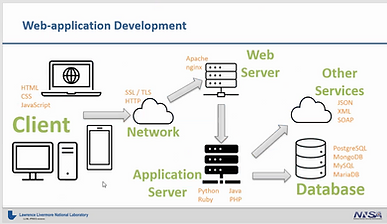
LIVERMORE NATIONAL LABS JOB SHADOW
February 24th, 2021
Recently, I attended a computing-themed job shadow event hosted by the Lawrence Livermore National Laboratory (LLNL) virtually and gained lots of insight into the day-to-day job of a data scientist, web developer, and high-performance computing engineer at the research facility.
The data science representative was Mrs.Nisha Mulakken, and she discussed the various applications her work had throughout the company. LLNL is responsible for a lot of research associated with national safety and security and therefore collects millions of clusters of data annually on anything ranging from nuclear technology to the COVID-19 pandemic. Nisha’s responsibilities include synthesizing the data she is given and regressing it to find patterns or interesting deviations to further her company’s goal.
The web development representative was Mr.Kyle Dickerson, and he discussed his role in updating web tools and services needed to ease the burden of work on LLNL employees. His work includes actively creating new features of their website and communal company sites but also utilizing employee feedback to make the sites more user-friendly.
The high-performance computing engineer who spoke to my group was Mr. Chris Earl. He provided many images of the supercomputers they have at LLNL and specifically Sierra one of their most popular supercomputers. Sierra is used often by many computing and simulation scientists to test and track the performance of nuclear-related weaponry and engineering.
We were also able to get an insider tour of the NIF laser, which is a inertial confinement fusion device that uses heat and compressed hydrogen to induce nuclear reactions. It is the world’s largest and most energetic laser.
The trip was very engaging although it was virtual because a lot of what they do at LLNL cannot be disclosed to the public as it is a matter of national security. It was interesting to see how engineering and technology are used to protect our country and serve as a form of national security.
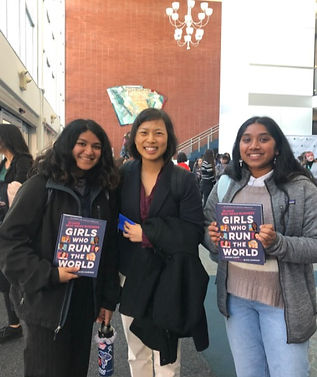
JUNIOR ACHIEVEMENT SHE LEADS CONFERENCE
February 6th, 2020
This wonderful conference was organized by Junior Achievement and sponsored by many wonderful companies who held multiple workshops for the enrichment of women in STEM and increasing representation of females in engineering. I was able to attend two workshops the first being engineering and the second being financial literacy. When our group first walked in we got the chance to listen to some inspirational women who spoke to us on their success stories and how they were able to "flip the script" on the cliches of being women in the workplace. I learned that around 50% of STEM communities in colleges and universities would be women, but this, unfortunately, did not translate into the workplace. This statistic shocked me because it exposed how many women really believed they could not make it in a STEM career and made me all the more determined to pursue one.
My workshop in engineering was hosted by some wonderful women in civil engineering from the Wood Rodgers company and they showed us how to construct a pipeline for a certain scenario they provided and talked to us about many basic concepts about aqueducts. The workshop on financial literacy was hosted by the Bank of America and it was really nice to see that the majority of positions of authority in the company were women.



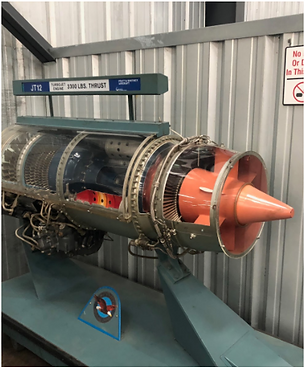


CAL MARITIME AND SUN POWER
February 13th, 2019
Cal Maritime is a maritime academic university that provides students with a chance to apply what they learn about engineering and maritime/security policy right away. At Cal Maritime university we were given a brief orientation of the history of the school and what the school stands for, and then we were given a short tour of some of their engineering classes and the infamous Golden Bear cruise.
I especially enjoyed the tour of the engineering classes and particularly the welding stations. Equipped with everything from safety equipment to plexiglass that would protect sparks from shifting between stations. I also enjoyed looking in detail at the maps, ship diagrams, and concepts that students were taught in order to master ship maintenance and operations. The Golden Bear was the most notable portion of the trip. From the long series of steep stairs, it took to get to the pit of the boat, the murals painted within it, and the extremely long wall of buttons and switches that were the epitome of ship operations - it was the final test for students to assess what they learned.
The second portion of this field trip was the tour of the SunPower factory. Throughout this tour, we went through the history of the company, their mission, a tour of what their panels installation process was like, and last but not least spoke with employees on their day-to-day work at the company.
Sun Power is a company that installs solar panels and produces an efficient and sustainable method through which people can consume electricity. My biggest takeaway from the factory tour was the precision that went into deciding the angles at which the panels were installed and the graph of how energy consumption changed in different weather and parts of the day.
PATRIOT JET TEAM FOUNDATION
December 6th, 2018
The tour began with the display of the MIG-17F fighter jet the Soviet Union used. It was made from mostly aluminum parts imported from the US to Finland than to Russia, but the propellor tanks with extra fuel were made of wood (from Siberia). The most interesting thing I saw on the plane was the pitot tube which was a tube designed essentially to measure fluid flow velocity. There are two on the aircraft (one on each side), but only one is functional (the one on the left-wing). During that portion of the tour Ed (our tour guide) also went over the differences between statute and nautical miles, and how they relate to Knotts and speed specifically in the air. Then we moved on to the airshow crafts that are specific to the Patriot Jet Foundation team shows, the L-39s. They are sleek and designed to serve as a form of entertainment for those watching as it has a slender nose that comes to a tip in order to help it maneuver, make aggressive turns, and create controlled stalls. Then we went on to the air simulators, which were a great hands-on experience. It tied up all the major takeaways as we looked at all the concepts being explained on the parts of the plane - rudders, ailerons, and the elevator along with different gauges and sensors that would engage and indicate vertical speed, altitude, Knotts, and level with the sea, ground, and troposphere levels. We also had two presentations in between the simulation and the tour that essentially explained different fields of space and air travel, and more specifically, the engineering aspects involved in them. The most memorable moment was when we went outside towards the end of the tour and we were able to grasp the distance that different planets are apart from each other. We talked about two major details that caught my attention and connected back to the project we had on building a rocket in order to achieve the greatest distance. The first was the concepts of drag, lift, velocity, and mass and the parts that they play in air travel with air and space crafts. Drag and lift are important during ascent and descent, and they should be accounted for when designing the rocket. Ed emphasized that symmetry and flaps that weigh the craft down would achieve these two ideas usually, and that was also something to consider. In regards to velocity and mass, they are the two parts of the kinetic molecular theory and account for all motion. It was important that when we built our rocket the velocity and mass are at certain balanced values in order for our projectile craft to traverse the furthest/longest distance. The second main piece of information that stayed in my mind was the ejector seat that Ed mentioned when explaining how fighters would evacuate the craft in times of emergency. The seat the pilot is sitting on will be propelled completely out of the aircraft with a rocket motor taking the pilot with it. The immediate change in air pressure combined with the parachute it deploys causes the impact and blow (distance covered vertically) to be high and make the person in the seat fly up very high.
COMPUTER HISTORY MUSEUM AND STANFORD
November 14th, 2018
The Computer History Museum was one of the best history lessons I’ve experienced in my entire life. I got an inside look into the first 2000 years of computing, the timeline of improvements made in the technological revolution from 1948-1988, and my most favorite exhibit - the Internet History Program which featured a full section dedicated to autonomous vehicles.
Here is a list of some of the coolest facts I learned while on the trip:
1. Although self-driving cars are still a work in progress (expedited thanks to Mr.Elon Musk), autonomous and semi-autonomous vehicles have been commonly used in the air, sea, and in space for research and national security for generations. For example, the General Atomics MQ-1 Predator unmanned drone is a surveillance drone that has the ability to fire missiles and can be used for remote killing if need be.
2. People are beginning to believe that self-driving taxi “pods” can potentially replace actual trains or buses like in Heathrow’s airport of robotics-taxis.
3. The oldest known scientific calculator is the Greek Antikythera Mechanism. It has a series of gears that is used to track the positions of astrological beings, predict eclipses, and track the calendar year.
4. Mercury delay lines and magnetic drums are the first examples of memory technologies. The computer waited for information to arrive at a certain location before it could be read or written.

SAP JOB SHADOW
October 18th, 2018
The Dublin Engineering Academy was very fortunate to be given the opportunity to attend a special job shadowing event at SAP where each of us was assigned to follow around a professional for a day. I was assigned to work with Mr.Eric, a sales representative for the company. Our day consisted of a couple of different meetings some of which Mr.Eric pitched to Microsoft's Azure team and another in which a smaller technology company pitched to Mr.Eric. He approached every meeting diplomatically and ensured to make decisions based on a checklist he created rather than personal biases. At the beginning and end of the day, we also sent some emails between members of his team to delegate different write-ups and marketing strategy plans for the current product they were trying to release. It was overall a really stimulating experience to look into a career and perspective that I hadn't considered much before and meet lots of different people on his team and from other technology company teams that work in sales.
DEDA MENTORSHIP PROGRAM
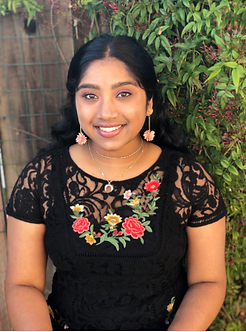
MY MENTOR: AAKANKSHA BHARDWAJ
2019-2020
This year I received the wonderful opportunity to be a part of the Dublin Design and Engineering Academy's (DEDA) mentorship program where every student is paired with a professional in a career field of choice the student is interested in or would like to explore. I got paired with Ms.Aakanska Bhardwaj a Sr. Business Intelligence Analyst at the Bank Of the West. However, her experience and advice are in no way limited by the one position she currently works in - she also took entrepreneurial courses at Stanford and works every day to ensure her clients are happy.
It was refreshing to learn a new perspective on the things that I did from a professional point of view and get feedback on how I could present myself to others in the best light possible. The experience changed how I look at choosing a major in college and career path because I learned that a career is dynamic and it is perfectly normal to change between jobs. I was finally able to come to terms with my various fields of interest and learned that they will all help me (in different ways) develop my professional identity.


